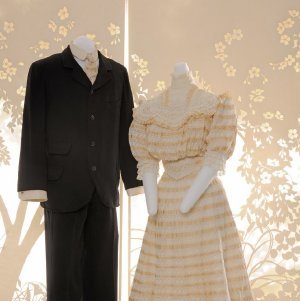Weddings are profoundly personal and intensely public, reflecting every couple's own wishes and the times and culture in which they live. Throughout Montana history, couples have wed in large community celebrations and simple courthouse proceedings, in fancy outfits and everyday dress.
What shapes weddings" Religion, of course, but also ethnicity, economics, fashion, and family expectations. Historical circumstances influence ceremonies and celebrations, as well. The coming of the railroads increased access to goods and ease in travel; war created scarcity and a sencse of urgency among marrying couples; and mass media created a national clture that reshaped community expectations. In these ways and others, large historical trends molded private choices for celebrating teh most significant ritual in American life. Montana was once much more diverse than it is today, a rich mix of Indian peoples and immigrants from Europe, Asia, and the eastern states. In 1900, 29 percent of Montanans had been born abroad, anotehr 28 percent of Montanans had foreign-born parents, and 5 percent were American Indian. Montana's earliest wedding traditions belong to the tribes, and every Montana tribe had its own wedding customs. Subsequently, groups emigrating to Montana brought their own traditions with them, including special foods and music. Chinese immigrants had special challenges. Between 1911 and 1953, intermarriage between whites and Asians was prohibited by law, and Chinese men outnumbered Chinese women by over nine to one. A lucky few were able to marry daughters of fellow Chinese merchants. Others found brides through matchmakers in China. For European immigrants, however, intermarriage became increasingly common, especially among the second and third generations. However, even today, some brides and grooms still incorporate elements of their families' ethnic heritage in their wedding celebrations.
 Virtual Exhibits
Virtual Exhibits 

